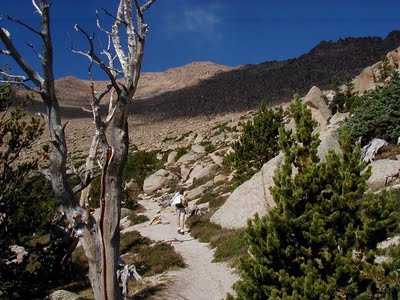In its most recent issue, Backpacker magazine lists “The Ten Most Dangerous Hikes in America.” Some of the entries aren’t surprising: the brutally hot Bright Angel in the Grand Canyon, the well-named Maze in Utah.
The list also includes Barr Trail. For those who are constantly frustrated by the bad rap Barr often gets – “it’s a sidewalk;” “it’s among the easiest 14er hikes” – the idea that Barr is really a badass might be good news.
But lightning is the dangerous reason Barr made the list, and it’s always been a component in any hike on Pikes Peak.
My scariest hike on Barr occurred a few years ago during an early September thunder/snowstorm. I was leading a group of friends, all first-timers to the trail, from the summit back down to Barr Camp where we had booked the guest cabin for the night.
Storms weren’t forecast, and skies were uniformly gray when we left the summit, but about two miles down, it started snowing and thundering. When one of my friends asked innocently, “why are the (metal) trail signs humming?” I knew we were in trouble. We spread out and kept moving downhill and made it to the cabin unscathed. (That hike is forever known by my clever friends as “the day Deb tried to kill us.”)
Turns out we did a couple of things right – we started in the morning, when there is (usually) a lower risk of storms, and we spread out when the storm started. But when you’re above tree line on Pikes Peak in a lightning storm, it’s nearly impossible to make yourself follow the other conventional lightning safety tips: take off your pack and move away from it; crouch down and balance on the balls of your feet.
Instead, the impulse is to flee, which takes a while on Barr (unless you’re Matt Carpenter).
|
|
|
Tags: Colorado Springs, hiking, Pikes Peak





 Blog RSS Feed
Blog RSS Feed Like on Facebook
Like on Facebook Follow on Twitter
Follow on Twitter Flickr
Flickr Contact
Contact

[…] Backpacker magazine listed the 10 most dangerous hikes in America. Number 3? Pikes Peak. Pikes was chosen because of its capricious weather with high winds, hail storms and a chance of snow year-round, and […]